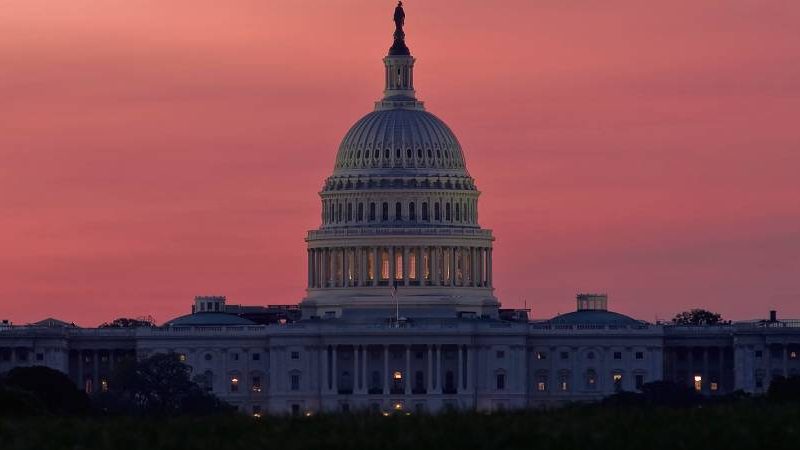by Andy Blocker & Jennnifer Flitton, Invesco Canada
U.S. Congress usually has one or two big items to pass before the holidays. But this year seems especially fraught with crises both fiscal and political. We detail four issues to watch.
It has become a familiar refrain in recent years that Congress cannot get to the end of a legislative session without some form of crisis – whether driven by politics, policy, or both – and there are always one or two big items that need to get passed before everyone heads home for the holidays.
This year, though, seems especially fraught with crises both fiscal and political, and both between and within each of the parties. Given that Democrats have only a three-vote margin in the House and a vice presidential tiebreaker in the Senate, there is little room for error as they navigate funding the government, avoiding default on U.S. debt, passing a $1.2 trillion Bipartisan Infrastructure Framework (BIF), and a $3.5 trillion-dollar domestic spending bill, commonly referred to as “reconciliation” or Build Back Better (BBB). Oh, and there’s the routine stuff like passing the $740 billion National Defense Authorization Act (NDAA). Suffice to say there’s plenty to do, not much time to do it, and more than enough political risk to go around.
Crisis #1 – Government funding
Congress passed a continuing resolution (or CR) to keep the government running through Dec. 3. While this averted the possibility of a government shutdown in October, it also just kicked the can down the road a couple of months, setting up another fight over government spending right around Thanksgiving.
The endgame for Fiscal Year 2022 appropriations remains decidedly unclear. The House has passed nine of the 12 annual appropriations bills while the Senate has passed none. This suggests there will be some sort of omnibus legislation containing all the bills, multiple smaller versions that combine a few appropriations bills, or even just a straight CR that would keep funding levels flat through the end of the year if the parties can’t agree on funding levels for each agency. More to come over the next two months as Congress inches toward yet another potential shutdown.
Crisis #2 – Government default
Much like the continuing resolution, Congress has kicked the debt ceiling can down the road, at least until Dec. 3. However, unlike the spending bill, it may be very difficult to get a reprieve like this again.
Senate Minority Leader Mitch McConnell (R-Kentucky) has made clear that Republicans in the Senate will not help Democrats raise the debt ceiling in December, insisting that they use “reconciliation” to increase the debt limit. McConnell suggested that he agreed to a short extension to give Democrats time to include a longer-term increase in the reconciliation bill, undercutting the chief Democratic argument that there was not time to include the debt ceiling in that process.
Democrats are continuing to say they will not use the reconciliation process to deal with the debt issue. They insist that Republicans support the debt increase because it is paying for obligations incurred under previous Democrat and Republican presidents — and because they supported an increase three times while President Donald Trump was in office. Like the spending bill, this will come to a head around Thanksgiving when Congress will have to do this all over again to avert both a government shutdown and a default on its debt.
Crisis #3 – Intraparty feud
This crisis doesn’t have the immediate real-world impact that either a government shutdown or debt default would have, but the debate between moderate and progressive Democrats over the $1.2 trillion BIF and the $3.5 trillion BBB plan that contains much of President Joe Biden’s domestic agenda is something of an existential crisis for both the administration and the Democratic majority in Congress.
The Senate passed the BIF by a vote of 69-30. That sent it to the House, where progressive Democrats immediately demanded that it be linked to the larger BBB package and threatened to withhold their votes if they did not get a commitment from the Senate to move the BBB. Moderate Democrats, not to be outdone, said they would not vote for the BBB if they did not first get a vote on BIF. Speaker Nancy Pelosi navigated this by promising the moderates a vote on BIF on Sept. 27 and promising the progressives that the reconciliation bill would be voted on shortly thereafter.
Moderate Senate Democrats, however, have other ideas – enter Senator Joe Manchin (D-West Virginia) and Senator Kyrsten Sinema (D-Arizona). Neither of them will support a $3.5 trillion package, with Manchin suggesting that $1.5 trillion is his ceiling and that the Senate “pause” in its consideration of the larger bill. Sinema has not said what size package she would support, but also has not supported Manchin’s calls for delay. Biden made his first in-person visit to House Democrats on Oct. 1 and suggested that the price tag for BBB could be in the range of $1.9 trillion to $2.3 trillion. He also blew up the timing for a vote on BIF, saying votes could happen “six minutes, six days, or six weeks from now.”
Neither of these bills needs to be passed to avoid some sort of fiscal calamity, but both need to be passed for Democrats to show they can govern, that Biden can deliver on his promises, and that congressional Democrats should be rewarded by retaining their majority in the next Congress.
Crisis #4 – Well, not really a crisis but certainly important
Every year for the last 60 years, Congress has passed and the president has signed the annual NDAA. Because neither Senate Armed Services Chairman Jack Reed (D-Rhode Island) nor House Armed Services Chairman Adam Smith (D-Washington) want to be the first to break that streak, the odds are high that it will pass again this fall.
So the real question is, when? The House adopted its version on Sept. 23 by a vote of 316-113. The Senate has reported its version from committee, but when it will reach the Senate floor is an open question. Given the logjam of major bills ahead of it, the Senate may not take this up until late in the fall.
There’s plenty to do to keep Congress busy for the next few months with enough political twists and turns to be entertaining, but also potentially calamitous. Fasten your seatbelts, it’s going to be a bumpy ride.
This post was first published at the official blog of Invesco Canada.















